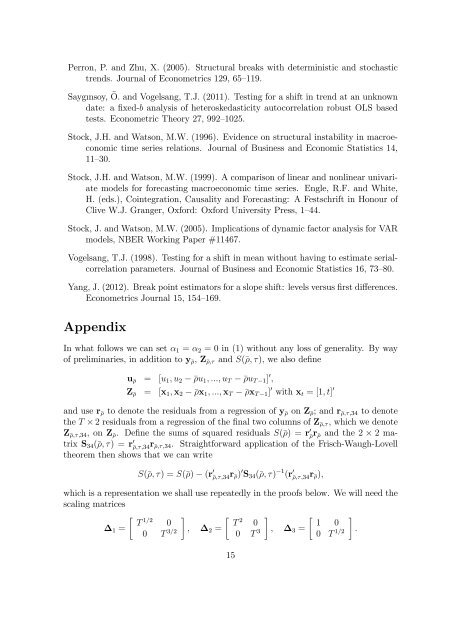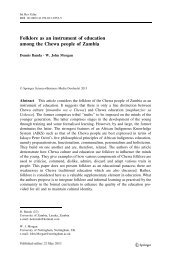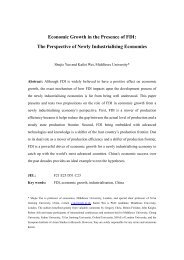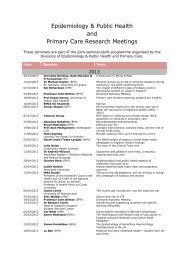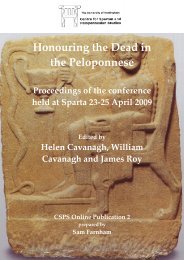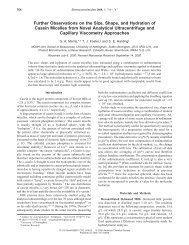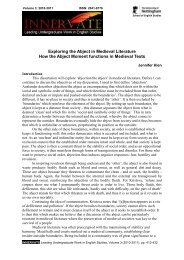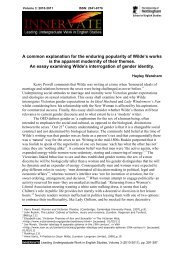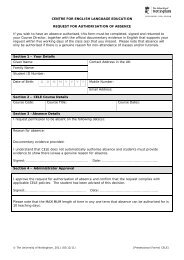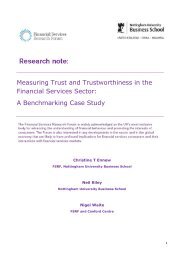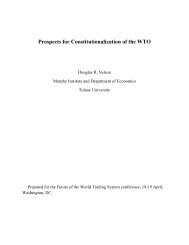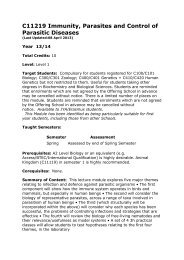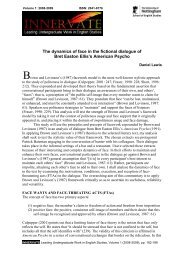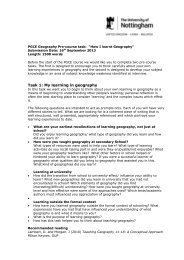Break date estimation for models with deterministic structural change
Break date estimation for models with deterministic structural change
Break date estimation for models with deterministic structural change
Create successful ePaper yourself
Turn your PDF publications into a flip-book with our unique Google optimized e-Paper software.
Perron, P. and Zhu, X. (2005). Structural breaks <strong>with</strong> <strong>deterministic</strong> and stochastic<br />
trends. Journal of Econometrics 129, 65{119.<br />
Saygnsoy, O. and Vogelsang, T.J. (2011). Testing <strong>for</strong> a shift in trend at an unknown<br />
<strong>date</strong>: a xed-b analysis of heteroskedasticity autocorrelation robust OLS based<br />
tests. Econometric Theory 27, 992{1025.<br />
Stock, J.H. and Watson, M.W. (1996). Evidence on <strong>structural</strong> instability in macroeconomic<br />
time series relations. Journal of Business and Economic Statistics 14,<br />
11{30.<br />
Stock, J.H. and Watson, M.W. (1999). A comparison of linear and nonlinear univariate<br />
<strong>models</strong> <strong>for</strong> <strong>for</strong>ecasting macroeconomic time series. Engle, R.F. and White,<br />
H. (eds.), Cointegration, Causality and Forecasting: A Festschrift in Honour of<br />
Clive W.J. Granger, Ox<strong>for</strong>d: Ox<strong>for</strong>d University Press, 1{44.<br />
Stock, J. and Watson, M.W. (2005). Implications of dynamic factor analysis <strong>for</strong> VAR<br />
<strong>models</strong>, NBER Working Paper #11467.<br />
Vogelsang, T.J. (1998). Testing <strong>for</strong> a shift in mean <strong>with</strong>out having to estimate serialcorrelation<br />
parameters. Journal of Business and Economic Statistics 16, 73{80.<br />
Yang, J. (2012). <strong>Break</strong> point estimators <strong>for</strong> a slope shift: levels versus rst dierences.<br />
Econometrics Journal 15, 154{169.<br />
Appendix<br />
In what follows we can set 1 = 2 = 0 in (1) <strong>with</strong>out any loss of generality. By way<br />
of preliminaries, in addition to y , Z ; and S(; ), we also dene<br />
u = [u 1 ; u 2 u 1 ; :::; u T u T 1 ] 0 ;<br />
Z = [x 1 ; x 2 x 1 ; :::; x T x T 1 ] 0 <strong>with</strong> x t = [1; t] 0<br />
and use r to denote the residuals from a regression of y on Z ; and r ;;34 to denote<br />
the T 2 residuals from a regression of the nal two columns of Z ; , which we denote<br />
Z ;;34 , on Z . Dene the sums of squared residuals S() = r 0 r and the 2 2 matrix<br />
S 34 (; ) = r 0 ;;34r ;;34 . Straight<strong>for</strong>ward application of the Frisch-Waugh-Lovell<br />
theorem then shows that we can write<br />
S(; ) = S() (r 0 ;;34r ) 0 S 34 (; ) 1 (r 0 ;;34r );<br />
which is a representation we shall use repeatedly in the proofs below. We will need the<br />
scaling matrices<br />
<br />
T<br />
1=2<br />
0<br />
T<br />
2<br />
0<br />
1 0<br />
1 =<br />
0 T 3=2 ; 2 =<br />
0 T 3 ; 3 =<br />
0 T 1=2 :<br />
15


